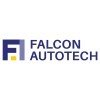Filter interviews by
Honeywell Automation Project Engineer 1 Interview Questions and Answers
Honeywell Automation Project Engineer 1 Interview Experiences
1 interview found
I applied via campus placement at Pune Institute of Computer Technology, Pune and was interviewed before Feb 2021. There were 3 interview rounds.
Speak in group discussion share your opinion respecting others points
(2 Questions)
- Q1. Explain project architecture?
- Ans.
Project architecture refers to the overall design and structure of a project, including its components and how they interact.
It involves identifying the key components of the project and how they fit together
It includes defining the relationships between different components
It also involves determining the technologies and tools that will be used
Examples include client-server architecture, microservices architecture, a
- Q2. Roles and responsibilities
(3 Questions)
- Q1. What is your family background?
- Q2. What are your strengths and weaknesses?
- Q3. Have you ever travelled outside your country?
Interview Preparation Tips
Skills evaluated in this interview
Top trending discussions






Interview questions from similar companies

I applied via Referral and was interviewed in Dec 2024. There were 3 interview rounds.
(1 Question)
- Q1. Deep dive on Agile and scrum
(1 Question)
- Q1. Scenario based questions on capacity management user story points
(1 Question)
- Q1. General culture fit behavioural questions
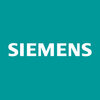
(2 Questions)
- Q1. Personal and professional background
- Q2. Current work profile
(2 Questions)
- Q1. Work knowledge and process related questions
- Q2. Language related queations. Knowledge of german language
Interview Preparation Tips
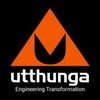
(1 Question)
- Q1. How will you measure code quality in the project
- Ans.
Code quality can be measured through code reviews, automated testing, code complexity analysis, and performance monitoring.
Conduct regular code reviews to ensure adherence to coding standards and best practices
Implement automated testing to catch bugs and ensure code functionality
Analyze code complexity metrics such as cyclomatic complexity and maintainability index
Monitor performance metrics like response time and res
(1 Question)
- Q1. How will you track the project metrics
- Ans.
Project metrics will be tracked using a combination of tools, software, and regular status meetings.
Utilize project management software to track progress, timelines, and budget
Hold regular status meetings with team members to discuss progress and address any issues
Use key performance indicators (KPIs) to measure project success and identify areas for improvement
Create visual dashboards or reports to easily communicate
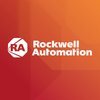

(1 Question)
- Q1. Basic personal information
(1 Question)
- Q1. Basic job description
(1 Question)
- Q1. Technical questions
(1 Question)
- Q1. All about previous company work procedure

I applied via Naukri.com and was interviewed in Mar 2024. There was 1 interview round.
Case study on time line


(2 Questions)
- Q1. Typically on your skilly set and experience
- Q2. What are the tench skill set you have.
Interview Preparation Tips
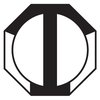
Project Lead Interview Questions & Answers
Technosoft Engineering Projects Limitedposted on 6 Jan 2025
I applied via Referral and was interviewed before Jan 2024. There were 3 interview rounds.
Paper based aptitude and technical tests.
CAD test of coffee jar, filter and lid.
(2 Questions)
- Q1. Personal, professional and experience based questions. Basic technical questions on design methodologies and documentation eg: FMEA, GD&T, Tolerance stack up, manufacturing process oriented questions etc.
- Q2. Explain project mentioned on resume, what was your contribution to this project?
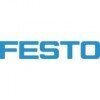
(3 Questions)
- Q1. Tell about your earler project's
- Q2. What is your bigest failure
- Q3. You you overcome from proems
- Ans.
I overcome problems by analyzing the situation, seeking advice, and taking action.
I analyze the situation to identify the root cause of the problem
I seek advice from colleagues or experts in the field
I take action by developing a plan and implementing solutions
I remain flexible and adaptable to adjust my approach as needed
For example, when faced with a project delay, I analyzed the cause, sought advice from my team, an...
Interview Preparation Tips
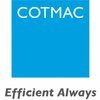
Interview Questionnaire
1 Question
- Q1. What is the PID?
- Ans.
PID stands for Proportional-Integral-Derivative. It is a control loop feedback mechanism used in engineering.
PID is used to control physical processes such as temperature, pressure, flow rate, and speed.
It calculates an error value as the difference between a measured process variable and a desired setpoint.
The three components of PID are proportional, integral, and derivative.
Proportional control responds to the curre...
Skills evaluated in this interview
Honeywell Automation Interview FAQs
Tell us how to improve this page.
Honeywell Automation Interviews By Designations
- Honeywell Automation System Engineer Interview Questions
- Honeywell Automation Software Engineer Interview Questions
- Honeywell Automation Project Engineer Interview Questions
- Honeywell Automation Senior Engineer Interview Questions
- Honeywell Automation Advanced Software Engineer Interview Questions
- Honeywell Automation Applications Engineer Interview Questions
- Honeywell Automation Data Engineer Interview Questions
- Honeywell Automation Data Science Intern Interview Questions
- Show more
Interview Questions for Popular Designations
- Project Manager Interview Questions
- Project Engineer Interview Questions
- Project Coordinator Interview Questions
- Project Lead Interview Questions
- Project Associate Interview Questions
- Senior Project Manager Interview Questions
- Senior Project Engineer Interview Questions
- Project Associate 1 Interview Questions
- Show more
Interview Questions from Similar Companies
Fast track your campus placements
Honeywell Automation Project Engineer 1 Reviews and Ratings
based on 2 reviews
Rating in categories
|
System Engineer
408
salaries
| ₹4.8 L/yr - ₹13.2 L/yr |
|
Project Engineer
312
salaries
| ₹2 L/yr - ₹10.9 L/yr |
|
Senior Engineer
217
salaries
| ₹5.9 L/yr - ₹20 L/yr |
|
Service Engineer
217
salaries
| ₹1.8 L/yr - ₹8.4 L/yr |
|
Software Engineer
192
salaries
| ₹3.7 L/yr - ₹12.3 L/yr |

Siemens
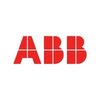
ABB

Schneider Electric
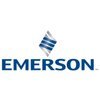
Emerson Electric Co.
- Home >
- Interviews >
- Honeywell Automation Interview Questions >
- Honeywell Automation Project Engineer 1 Interview Questions



